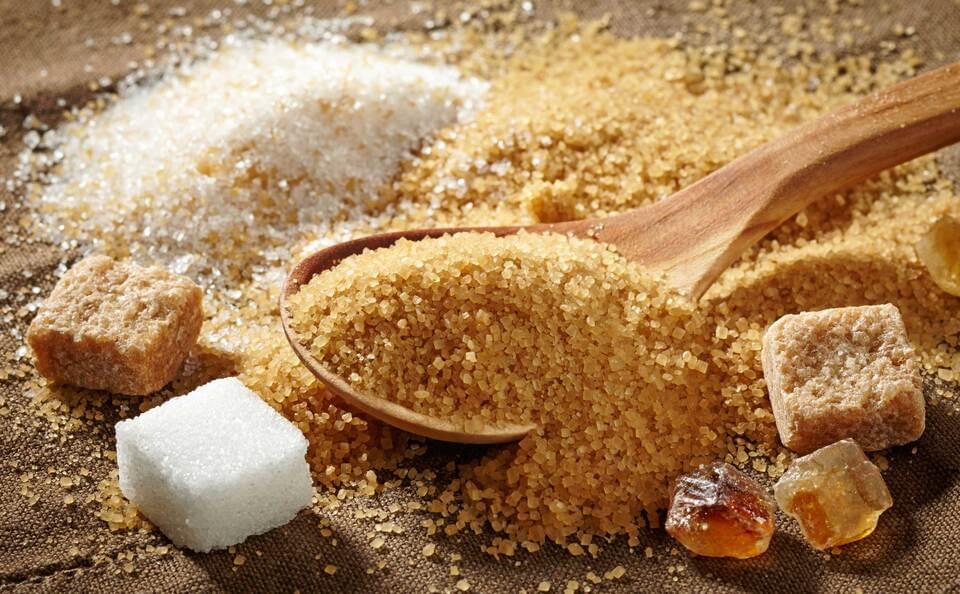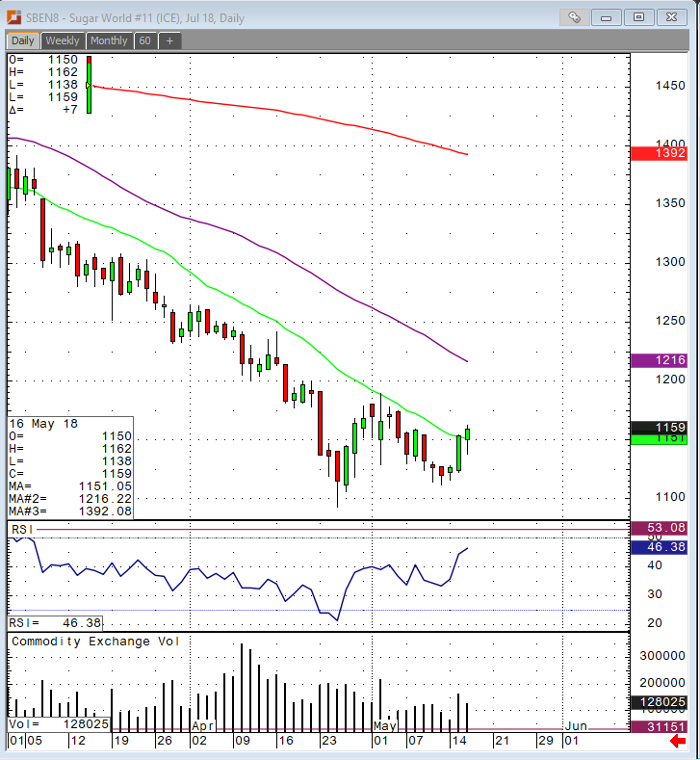
This week’s look at July sugar futures finds a market that continues to labor under significant fundamental pressure. Specifically, the idea that top producers India and Thailand will post another year of record production. In an article from Bloomberg last week we saw talk of this record production. And, notably, word from the recent sugar industry gathering in New York, Sugar Week was of declining growth in consumption. This is more than interesting for sugar watchers as we see lots and lots of talk about sugar in the food and fitness industries, while the financial world seems to prefer to pretend that this challenge doesn’t exist. Lack of demand for sugar coming right at a time where production of sugar is increasing again to the point of surplus is not an environment that fosters sustainable rallies. It really begs the question as to why producers, who we can reasonably assume are sophisticated market watchers, would produce a commodity that people are wanting less of and that continues to decline in price. Recent discussion has focused on producing countries gunning for energy independence and not so much on selling sugar for consumption. This explanation makes sense and by extension makes the case for further erosion in the price of sugar. Unlike OPEC, and to a certain degree US shale oil producers, countries producing sugar are showing no restraint in production. They could believe that ultimately, while maybe not this year or the next, much of the sugar they produce will find a home at a refinery and be burned as fuel domestically.
As usual, the idea that I can wrap my head around the bearish fundamentals so clearly here at this “low” price level speaks to the possibility of violent and significant short covering rallies. Funds have near record short positions. The commercial trader is on the other side of that. Historically, we look to the commercial category to define possible market direction and with good reason. Those are the participants who have the best insight into the market as they produce and use the commodity in question. How could the market possibly go lower if the funds are massive short and the commercial trader is on the other side? Who is left to sell sugar futures? What we have witnessed in the last year is a recycling of those positions. Funds cover short trades on moves that take sugar futures above technical levels, either taking percentage-based profits or flattening positions. The size of individual participant positions declines. This allows the market to gather itself and then large participants can come back again and take the market to new lows. Hightower group this morning pointed to ideas that higher gasoline prices are making for good margins on cane turned into ethanol in Brazil. And the possibility of dry weather in areas of Brazil could lead to declines in production as well. This lays the groundwork for short-term bullish developments should they come to fruition or continue to impact the supply of sugar. Normally we follow the adage “Trade with the Trend!” But I believe that short covering rallies could present real opportunity and that options in sugar are inexpensive enough to allow traders to get in with less expense or scale into larger positions as risk tolerance and trading capital allows.
Sugar Jul ’18 Daily Chart



